Table of Contents
ToggleIntroduction

Printing technology has come a long way since Johannes Gutenberg invented the printing press in the fifteenth century. The advancement of printing technology—from letterpress to offset to digital printing has fundamentally altered how we produce printed materials. We are leading a new printing revolution that will probably have a considerably greater influence on the industry.
Prospects are bright because printing technology is always developing. The manufacturing, medical, and even food industries have all been significantly impacted by one of the most important advancements, 3D printing.
Making complicated objects via 3D printing, which involves stacking layers of material, has the potential to fundamentally alter how things are manufactured.
The development of printable electronics, which entails printing circuits, sensors, and other electrical components onto various surfaces, is another area of growth for printing technology.
By bringing down the cost and raising the availability of electronic goods, this method has the potential to revolutionize their manufacture.
Bioprinting, which involves creating human tissues and organs for therapeutic purposes through printing, and nanotechnology-based printing, which may result in the development of novel materials and technologies, are other advancements in printing technology.
In addition to 3D printing and printable electronics, these advancements in printing technology.
The future of printing technology appears bright and promising. We will undoubtedly witness even more ground-breaking advancements in the coming years because fresh developments are being produced regularly.
Whether it is used in the production of goods or the creation of medical devices, the possibilities are endless, and the future of printing technology looks bright.
What are the upcoming features of printing technology?
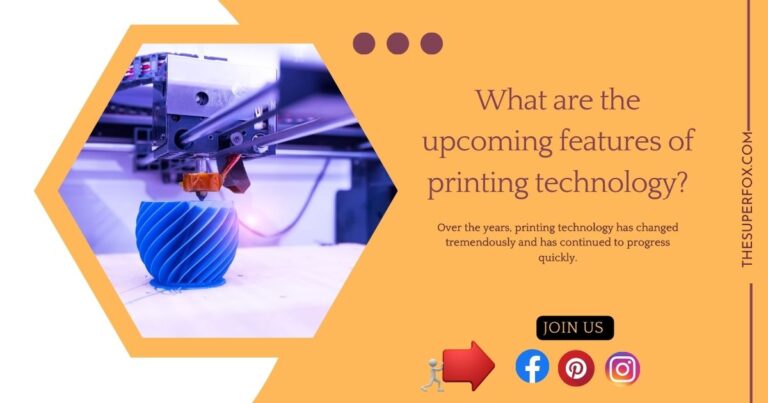
Over the years, printing technology has changed tremendously and has continued to progress quickly. Future printing technology is expected to introduce even more fascinating and ground-breaking characteristics that will fundamentally alter how we make and print items.
Here are some upcoming cutting-edge printing capabilities to which we can look forward:
3D printing
Although this technology has already made enormous strides in recent years, its future holds even more promise. The technology will be able to print bigger and more intricate products, and it will be more widely available. Additionally, the use of sustainable materials and waste material recycling will make 3D printing more environmentally friendly.
Nanoprinting
This cutting-edge technology involves printing substances at the nanoscale. With the aid of this technology, novel materials with special qualities like strength, conductivity, and flexibility will be created. Numerous industries, including healthcare, energy, and electronics, stand to benefit from nano printing.
Bioprinting
Bioprinting is a new medical technology that involves creating human organs and tissues through printing. The lack of organ donors and the demand for more individualized medical care can both be addressed by bioprinting, which has the potential to revolutionize the healthcare sector.
Printable Electronics
Another new development in printing technology. On a variety of materials, including paper and plastic, it includes printing electronic circuits, sensors, and other components. Electronics that can be printed have the potential to change how they are made, making them more accessible and affordable.
Augmented Printing Technology
Using printing technology with augmented reality, a new feature called “augmented reality printing” has been developed. It enables printed items to come to life and become more engaging and interactive. The printing of augmented reality can revolutionize the advertising sector and improve educational opportunities.
Future developments in printing technology will include many fascinating new features. The potential for technologies like 3D printing and bioprinting to transform numerous sectors is virtually limitless.
3D Printing

A cutting-edge technology called 3D printing, commonly referred to as additive manufacturing, enables the production of three-dimensional items from digital blueprints. The procedure entails layer-by-layer construction of the thing out of materials including ceramics, metals, polymers, and even biological ones. If you want to know more about the 3D Printing Technology and its types, read our article on 3D Printer | The Future of Printing Technology
The uses of 3D printing have grown across many industries, including aerospace, automotive, healthcare, and even fashion, as the technology has made great strides over time. Various planned updates will increase the possibilities of 3D printing even further due to its continued growth.
- Faster Printing Speeds – The speed at which items may be created has been one of the main issues with 3D printing. However, printing speed has substantially risen as a result of recent technological advancements. Modern 3D printers are more effective and productive since they can print up to 100 times faster than conventional printers.
- Higher resolution and more accurate details have led to a considerable improvement in the print quality of 3D printed products. This is because new printing methods and materials have been developed, such as multi-jet fusion, which employs infrared energy to fuse materials and create prints of excellent quality.
- Multi-Material Printing: The capacity to print several different materials simultaneously is a forthcoming improvement to 3D printing. This will make it possible to design more intricate and useful items, such as those with built-in electronics or sensors. Printing using many materials can also make printed products stronger and more long-lasting.
- Sustainable Printing – With people’s concern for the environment growing, 3D printing that is environmentally friendly has taken center stage. This covers the use of biodegradable materials, waste material recycling, and a decrease in the amount of energy used during the printing process.
- 4D printing: 4D Printing is a cutting-edge technique that adds time as the fourth dimension to 3D printing, elevating it to a whole new level. This implies that the printed object can change over time or adapt to its surroundings by, for example, changing shape or adjusting to temperature changes. Numerous sectors, including healthcare and construction, could be completely transformed by 4D printing.
- Artificial Intelligence (AI) Integration: This potential improvement in 3D printing involves incorporating AI. This will make it possible for 3D printers to learn from past prints and streamline the printing process, leading to printing that is quicker and more effective. AI is also capable of analyzing ideas and giving suggestions for enhancements, streamlining, and improving the design process.
- Medical 3D Printing: Although medical 3D printing has advanced significantly, there is still much opportunity for improvement. 3D printing has the potential to transform the healthcare industry by providing customized medical treatments and eliminating the need for organ donors.
In summary, the 3D printing industry is rapidly growing and continually changing. This technology has a wide range of possible applications, including faster printing speeds, environmentally friendly printing, 4D printing, and many more.
Because 3D printing has the ability to create complex and practical objects, it has the potential to revolutionize numerous industries and improve our daily lives. As technology develops, we might expect even more groundbreaking updates in the future. If you want to buy a 3D Printer for yourself , we have compiled a list of Best 3D Printers under 1000$ which will be helpful for you to choose the 3D Printer for you.
Nanoprinting
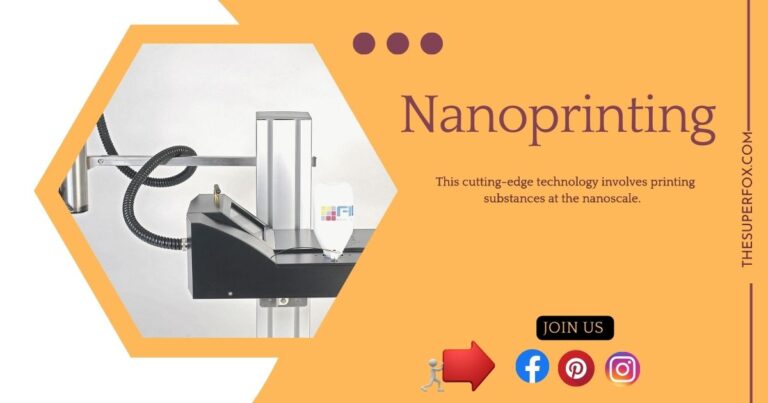
Although medical 3D printing has advanced significantly, there is still much opportunity for improvement. 3D printing has the potential to transform the healthcare industry by providing customized medical treatments and eliminating the need for organ donors.
In summary, the 3D printing industry is rapidly growing and continually changing. This technology has a wide range of possible applications, including faster printing speeds, environmentally friendly printing, and 4D printing.
Because 3D printing has the ability to create complex and practical objects, it has the potential to revolutionize numerous industries and improve our daily lives. As technology develops, we might expect even more groundbreaking updates in the future.
Nanoprinting’s capacity to create materials with distinctive features that are impossible to attain through conventional manufacturing processes is an important additional feature.
In different applications, such as water filtration and self-cleaning surfaces, nano printing, for instance, can create materials with superhydrophobic or super hydrophilic qualities.
The ability to print circuits, sensors, and other electronic components on a variety of surfaces, including flexible materials like plastics and fabrics, presents another opportunity for nano printing to transform the electronics sector.
The creation of wearable technology and other cutting-edge devices now has more opportunities thanks to this.
Nano-printing has the potential to revolutionize the healthcare industry’s ability through printing technology to produce medical devices and even develop human tissues and organs.
This technology has the potential to completely transform the transplant market; researchers have already developed bio-inks that can be used to print living organs and tissues.
By enabling the creation of new materials for energy conversion and storage, nanoprinting has the potential to completely transform the energy sector.
For instance, it is possible to create batteries and solar cells using nano printing which is both more potent and efficient than traditional batteries.
A cutting-edge technology called nano printing has the potential to completely change a number of industries. New opportunities for innovation and development are made possible by its capacity to produce materials with exceptional precision and distinctive properties.
We can anticipate even more ground-breaking features and applications in the years to come as technology develops.
If you want to know about Nanoprinting, read our article on Nanoprinting – Unraveling the seven wonders of Nanoprinting
Printable Electronics
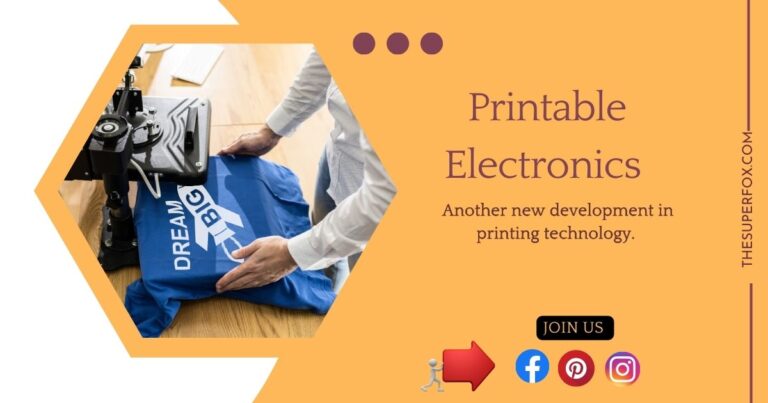
A new technology called printable electronics allows for the printing of electronic circuits, sensors, and other parts on a variety of surfaces, such as paper and plastic. Electronic device manufacturing could change thanks to this technology, making them more accessible and affordable.
The ability of printable electronics to create flexible electronic devices is one of its most intriguing features. Unlike printable electronics, which can be printed onto flexible materials like fabrics and plastics, traditional electronics are typically rigid and inflexible.
The creation of wearable technology, including smart clothing and health monitoring devices, now has more opportunities.
The quick and simple creation of customized electronic devices using printable electronics is another fascinating feature. Printable electronics can be produced more quickly and cheaply than traditional manufacturing methods because they can be printed directly onto surfaces without the need for expensive molds or tooling.
This facilitates the prototyping of personalized electronic devices for small businesses and individuals.
By enabling the development of more effective and portable solar panels and batteries, printable electronics also have the potential to revolutionize the energy sector. Utilizing printable electronics can lower production costs and improve public access to renewable energy sources.
A number of upcoming features in printable electronics, in addition to their already impressive capabilities, promise to further improve them. These features include:
- Multi-Material Printing – Multi-material printing entails the simultaneous printing of various materials, including conductive and insulating ones. This will make it possible to design electronic gadgets that are more sophisticated and have integrated sensors and actuators.
- High-resolution printing: High-resolution printing will make it possible to produce electronic devices with more intricate and minute features. This will enhance the functionality of electronic devices and make it possible to develop more sophisticated technologies.
- Advanced Materials – The performance and functionality of printable electronics will be improved by the development of advanced materials like conductive polymers and graphene. These materials’ distinctive characteristics, like flexibility and high conductivity, can increase the effectiveness and robustness of electronic devices.
- Integrating artificial intelligence (AI): Integrating artificial intelligence into printable electronics can streamline the printing process and increase the precision of the printed components. This will improve the accuracy and efficiency of the production of electronic devices.
An innovative technology called printable electronics has the potential to revolutionize a number of industries, including electronics, healthcare, and energy.
It creates prototypes with unique designs and flexible electronic devices, opening up new avenues for innovation and growth. We can anticipate even more exciting features and applications of printable electronics in the future thanks to ongoing technological advancements.
Bioprinting

A cutting-edge technique called bioprinting uses 3D printing to make tissues and even organs out of living cells and other biological components. It is a cutting-edge field that has the power to transform how we see medicine and the healthcare industry.
One of the unique characteristics of bioprinting is its capacity to create specialized tissues and organs that are tailored to a patient’s needs.
By using the patient’s cells as the foundation for the bioprinting process, this is accomplished. Removing the need for donors and reducing the possibility of rejection, makes transplants safer and more effective.
The potential for drug discovery and testing offered by bioprinting is another distinctive feature. New drugs can be tested for effectiveness and safety using bio-printed tissues, eliminating the need for animal testing and accelerating the drug development process.
This can result in a variety of diseases and medical conditions being treated more effectively and efficiently.
Bioprinting has a number of potential future uses that are being investigated in addition to its present uses. These abilities consist of:
- Printing of Complex Organs – Currently, simple tissues like skin and cartilage are produced primarily using bioprinting. The ability to print more complicated organs, like the heart and liver, is being developed by researchers. The transplant industry could undergo a revolution thanks to this, and countless lives could be saved.
- Use of Stem Cells – Stem cells are special because they can develop into any type of cell in the body. Researchers can print organs and tissues that are more biologically similar to the patient’s tissues by using stem cells. Rejection risk can be decreased and transplant success increased as a result.
- Printing of Implantable Medical Dev ices – Implantable medical devices, such as pacemakers and hearing aids, can also be made using bioprinting. Because they can be customized to the individual needs of the patient, these devices have the potential to be more biocompatible than traditional ones.
- Printing of Synthetic Tissues – Synthetic tissues that can be tested and used in medical research can also be printed using bioprinting. To study diseases and test potential treatments, these tissues can be created to mimic particular biological processes.
The field of bioprinting is one that holds a lot of promise for advancing healthcare and medical procedures. It opens up new opportunities for medical advancements due to its capacity to produce personalized tissues and organs as well as its potential for drug discovery and testing.
Future bioprinting applications and capabilities should be even more exciting as a result of ongoing research and development.
Augmented Reality Printing
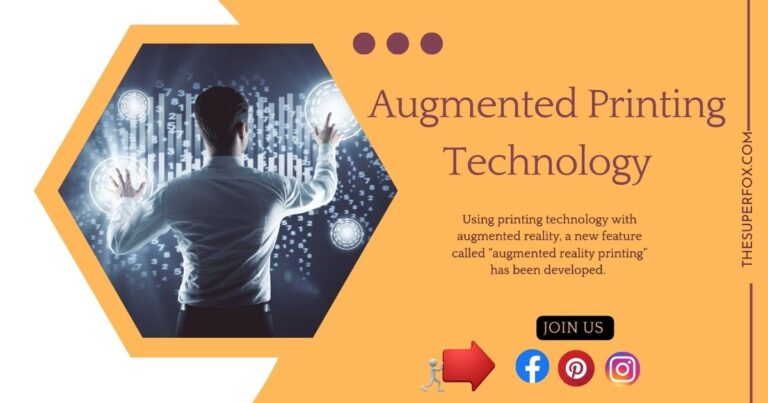
A cutting-edge technology called augmented reality (AR) printing fuses printing with augmented reality. It enables printed materials to come to life and become more engaging and interactive.
Although it is still in its infancy, augmented reality printing has already made significant progress and has the potential to completely transform a range of industries, including advertising, education, and entertainment.
The ability of AR printing to merge physical and digital media is one of its distinctive features. AR printing makes printed materials more interactive and immersive by incorporating digital elements.
This can improve the user’s interaction with the content as well as their comprehension and memory of the information.
A special marker or QR code is used in AR printing, which is then scanned with a smartphone or headset that supports the technology. The device then adds digital content to real-world objects to produce an augmented reality effect.
Several industries, including advertising, education, and entertainment, can use this technology.
AR printing can be used in the advertising sector to produce more interactive and engaging commercials. Using a marker, for instance, a business could print a flyer that, when scanned, overlays a 3D model of its product.
This gives potential customers a chance to see the product in use and better understand its features and advantages.
AR printing can be used in the education sector to produce interactive textbooks and teaching resources. An illustration would be the inclusion of markers in science books that, when scanned, overlay 3D representations of the human body or other biological structures.
This can increase learning engagement and interaction and enhance the student’s comprehension and retention of the subject matter.
AR printing can be used in the entertainment sector to produce interactive movie posters or merchandise. A movie poster, for instance, might have a marker on it that, when scanned, overlays the movie’s trailer.
This can make the viewer feel more immersed in the movie and raise their level of excitement and anticipation.
We can anticipate even more exciting capabilities and applications as AR printing develops. For instance, advances in AR technology might result in more precise and realistic digital overlays, enhancing the immersion of the augmented reality experience.
Artificial intelligence (AI) could also be used to improve the design and implementation of AR printing materials, as well as optimize the AR printing process.
In conclusion, AR printing is a novel and cutting-edge technology that has the potential to revolutionize numerous industries. It is an effective tool for advertising, instruction, and entertainment because it enables users to have immersive and interactive experiences.
Future developments in technology should bring about even more exciting capabilities and use for augmented reality printing.
Conclusion
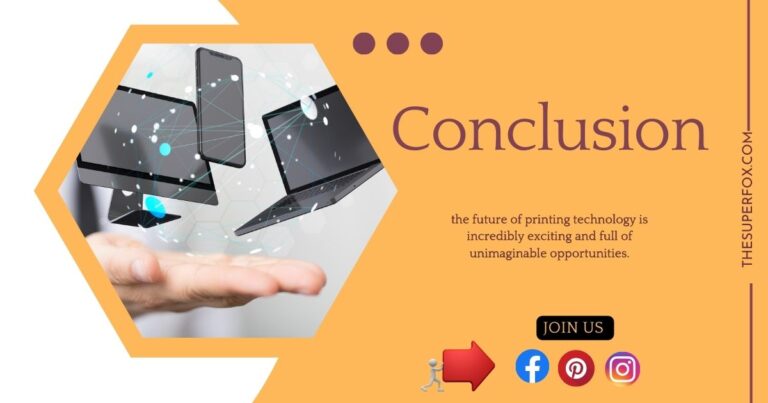
Therefore, the future of printing technology is incredibly exciting and full of unimaginable opportunities. Technologies like 3D printing, nano printing, printable electronics, bioprinting, and augmented reality printing are already beginning to transform a number of industries and improve our lives in a variety of ways.
Every aspect of our daily lives, from more effective renewable energy sources to personalized medical treatments, could be revolutionized by printing technology.
As technology advances, we can expect printing technology to see even more revolutionary advancements.
Artificial intelligence, multi-material printing, high-resolution printing, and advanced materials will all be included, which will further improve the capabilities of printing technology and open the door to even more innovative applications.
Healthcare, energy, and manufacturing are just a few of the industries where printing technology has the potential to make a big difference. We will be able to develop personalized treatments, increase effectiveness, and cut down on waste.
There are countless possibilities for printing technology in the future, and as it develops, we can anticipate the emergence of even more ground-breaking uses.
Overall, the future of printing technology is very exciting, and it is important to stay current with new developments in the industry.
The future of our world will undoubtedly be greatly influenced by printing technology because of its capacity to develop new materials, improve manufacturing techniques, and revolutionize numerous industries.













Leave a Reply